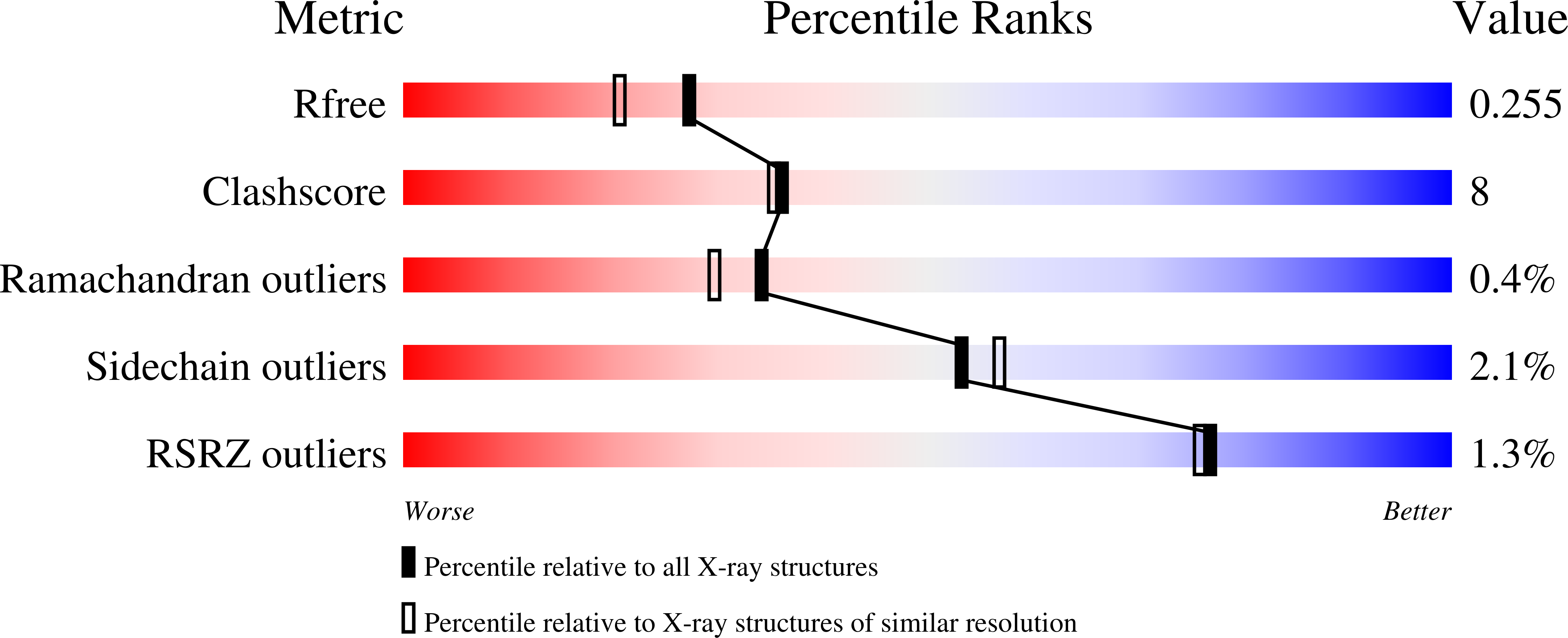Chemical rescue of a site-specific mutant of bacterial copper amine oxidase for generation of the topa quinone cofactor
Matsunami, H., Okajima, T., Hirota, S., Yamaguchi, H., Hori, H., Kuroda, S., Tanizawa, K.(2004) Biochemistry 43: 2178-2187
- PubMed: 14979714
- DOI: https://doi.org/10.1021/bi0361923
- Primary Citation of Related Structures:
1UI7, 1UI8 - PubMed Abstract:
The topa quinone (TPQ) cofactor of copper amine oxidase is produced by posttranslational modification of a specific tyrosine residue through the copper-dependent, self-catalytic process. We have site-specifically mutated three histidine residues (His431, His433, and His592) involved in binding of the copper ion in the recombinant phenylethylamine oxidase from Arthrobacter globiformis. The mutant enzymes, in which each histidine was replaced by alanine, were purified in the Cu/TPQ-free precursor form and analyzed for their Cu-binding and TPQ-generating activities by UV-visible absorption, resonance Raman, and electron paramagnetic resonance spectroscopies. Among the three histidine-to-alanine mutants, only H592A was found to show a weak activity to form TPQ upon aerobic incubation with Cu(2+) ions. Also for H592A, exogenous imidazole rescued binding of copper and markedly promoted the TPQ formation. Accommodation of a free imidazole molecule within the cavity created in the active site of H592A was suggested by X-ray crystallography. Although the TPQ cofactor in H592A mutant was readily reduced with substrate, its catalytic activity was very low even in the presence of imidazole. Combined with the crystal structures of the mutant enzymes, these results demonstrate the importance of the three copper-binding histidine residues for both TPQ biogenesis and catalytic activity, fine-tuning the position of the essential metal.
Organizational Affiliation:
Department of Structural Molecular Biology, Institute of Scientific and Industrial Research, Osaka University, Ibaraki, Osaka 567-0047, Japan.















